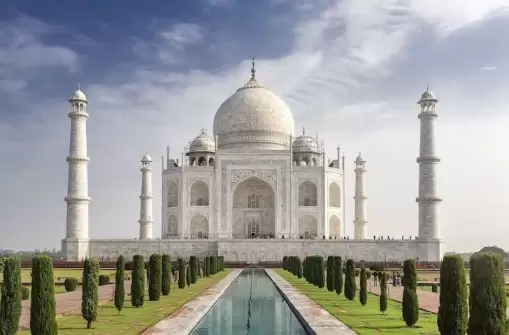Discovering India's Some UNESCO World Heritage Sites


India is a land of diverse cultures, traditions, and architecture, and it is no surprise that the country is home to 38 UNESCO World Heritage Sites. These sites reflect India's rich cultural heritage, and they offer a glimpse into the country's fascinating history and architectural marvels.
In this blog, we are going to list out some of the top UNESCO World Heritage Sites in India.
Taj Mahal: One of the most famous and iconic landmarks in India, it is located in the city of Agra, Uttar Pradesh. Mughal emperor Shah Jahan built this to show his love for his wife Mumtaz Mahal, the Taj Mahal is considered one of the most beautiful buildings in the world. It is a masterpiece of Mughal architecture and attracts millions of visitors from around the world every year. You can also choose our best and popular Delhi to Agra trip by bus.
Qutub Minar: The Qutub Minar is another famous UNESCO World Heritage Site in India. Located in Delhi, this ancient tower stands at a height of 73 meters and was built by Qutub-ud-din Aibak in the 12th century. The tower is a masterpiece of Indo-Islamic architecture and is adorned with intricate carvings and inscriptions.
Ajanta and Ellora Caves: Located in the Aurangabad district of Maharashtra, the Ajanta and Ellora Caves are a group of 34 ancient caves that were carved out of rock between the 2nd century BC and the 6th century AD. The caves are famous for their stunning rock-cut sculptures and paintings that depict the life and teachings of Buddha and various Hindu deities.
Red Fort: The Red Fort is located in Delhi. Built in the 17th century by Mughal emperor Shah Jahan, the Red Fort is a magnificent structure that is known for its red sandstone walls and intricate carvings. It was the residence of the Mughal emperors for nearly 200 years and is now a popular tourist destination. You can take our Delhi Darshan for better experience.
Fatehpur Sikri: Located in Uttar Pradesh, Fatehpur Sikri is a deserted city that was built by Mughal emperor Akbar in the 16th century. The city is famous for its stunning architecture and is a fine example of the fusion of Islamic, Hindu, and Persian architectural styles. It is home to some of the most impressive buildings in India, including the Buland Darwaza, the Jama Masjid, and the Tomb of Salim Chisti.
Hampi: Hampi is located in the state of Karnataka. It was once the capital of the Vijayanagara Empire and is home to some of the most impressive ruins in India. The site is famous for its ancient temples, palaces, and other structures that are spread over a vast area.
Khajuraho Group of Monuments: Located in Madhya Pradesh, the Khajuraho Group of Monuments is a group of Hindu and Jain temples that were built between the 10th and 12th centuries. The temples are famous for their intricate carvings that depict various scenes from Hindu mythology and the Kama Sutra.
Final Thoughts
India is a diverse and fascinating country that offers a wealth of experiences for travellers. Whether you are interested in history, culture, natural beauty, adventure, or simply want to relax and unwind, India has something to offer for everyone.
These are just a few of the many UNESCO World Heritage Sites in India. Each site has its own unique history, architecture, and cultural significance, and they all offer a fascinating glimpse into India's rich and diverse heritage. Whether you are a history buff or simply a curious traveller, visiting these sites is an experience that you will never forget.
